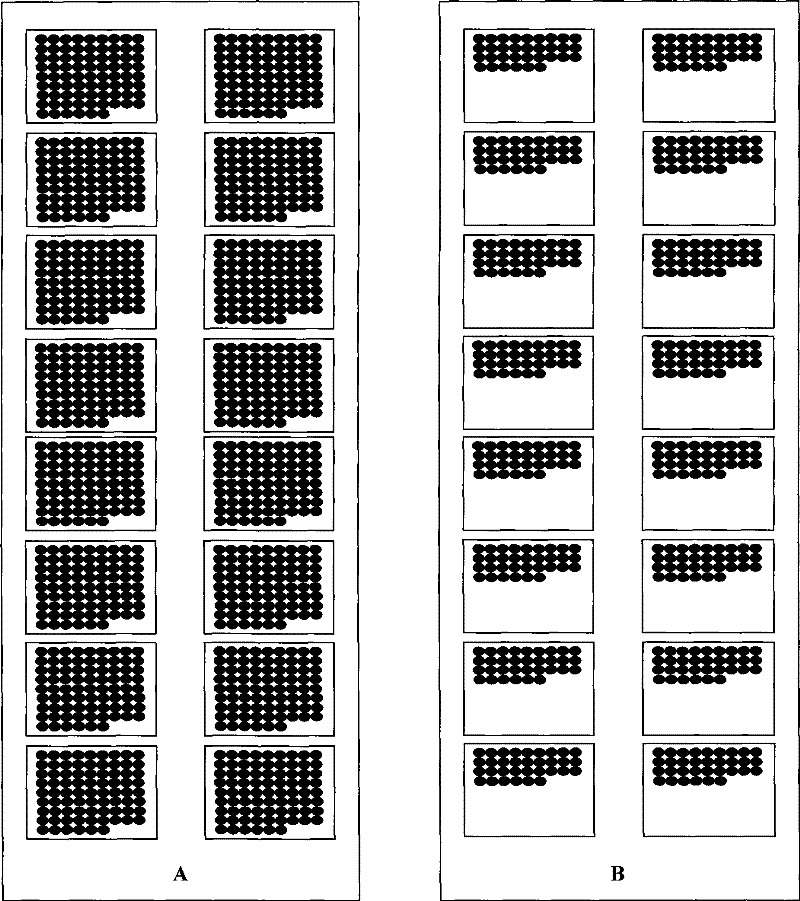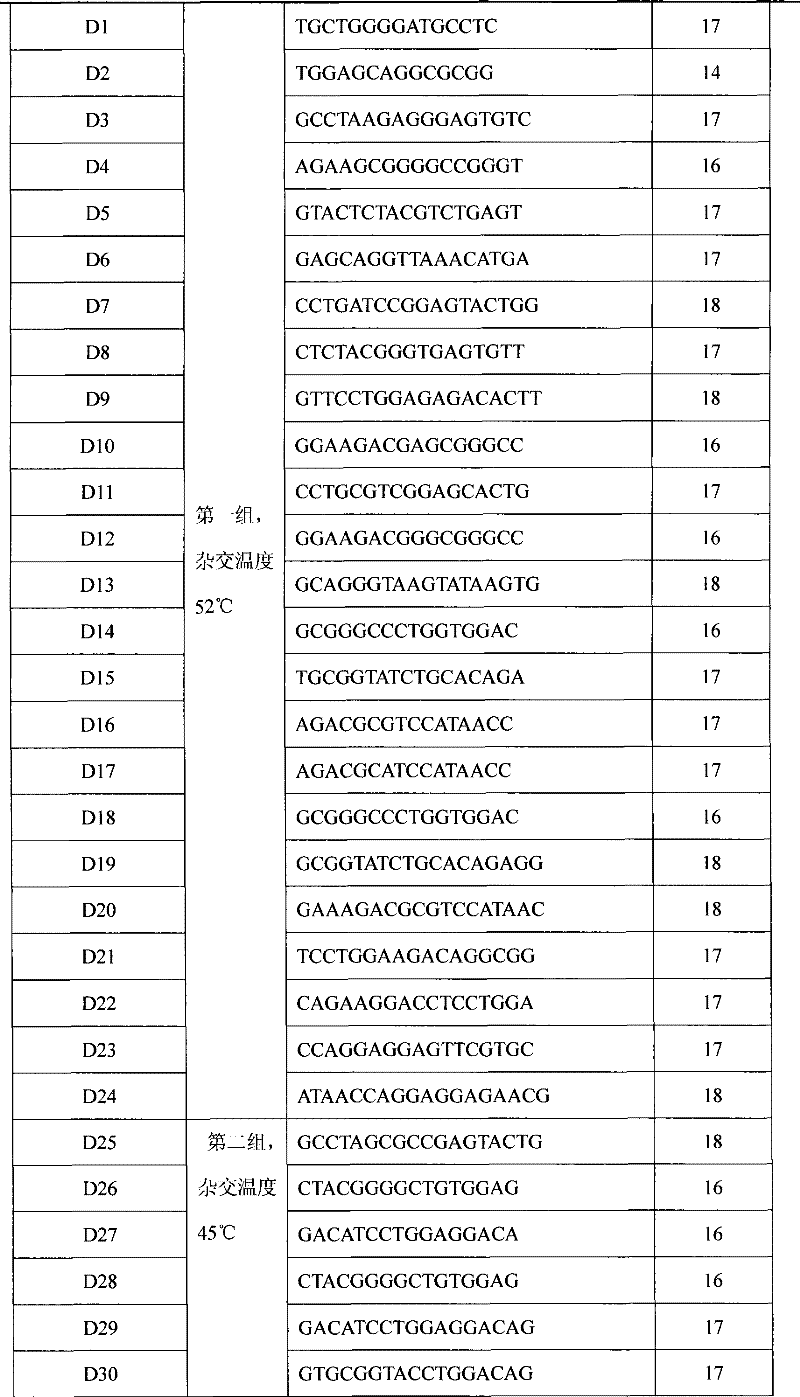Reagent kit for parting detection of HLA-DRB1 gene
A technology for HLA-DRB1 and genotyping, which is applied in the field of human leukocyte antigen gene detection and typing kits, can solve the problems of low probe hybridization specificity, improve specificity, increase detection throughput, and avoid Effect of false positive and false negative problems on probe hybridization results
- Summary
- Abstract
- Description
- Claims
- Application Information
AI Technical Summary
Problems solved by technology
Method used
Image
Examples
Embodiment 1
[0020] Example 1: Design and synthesis of HLA-DRB1 genotyping DNA microarray PCR primers and oligonucleotide probes
[0021] In order to amplify the second exon of the HLA-DRB1 gene locus by specific PCR, design specific 5' primers P1-1, P1-2 from the end of the first intron to the beginning of the second exon respectively , P1-3, P1-4, P1-5 and P1-6, and the 3'common primer P2 was designed at the end position of exon 2. (see Table 2 of the Summary of the Invention for the primer sequences) for the polymorphism of the 2nd exon gene sequence of HLA-DRB1, design 33 kinds of typing probes, the probes are divided into two groups (see Table 1 of the Summary of the Invention), the first A group of 24 probes, the hybridization temperature is 52°C; a second group of 9 probes, the hybridization temperature is 45°C.
Embodiment 2
[0022] Example 2: Preparation of HLA-DRB1 Genotyping DNA Microarray
[0023] Using a gene chip automatic spotting instrument, 33 types of typing probes and two kinds of control probes were spotted on a specific area of the glass slide to make a DNA microarray.
[0024] (1) Spotting probe solution: dilute the probe into 5×SSC, 0.05% SDS solution, the final concentration is 30uM;
[0025] (2) sampling matrix: (such as figure 1 ) divides the probes into two groups, the first group contains 24 typing probes and 2 control probes. The first group of probes was spotted on the first glass slide and divided into 16 hybridization areas, and the hybridization areas were arranged in 2 columns and 8 rows. In each hybridization area, the probes are arranged in the following manner: 3 points for each probe, 3 probes in each row, 9 points, 9 rows in total, and only 2 controls in the 9th row, 6 points.
[0026] The second group contains 9 typing probes and 2 control probes. The arrangeme...
Embodiment 3
[0027] Example 3: Using HLA-DRB1 genotyping detection and result analysis
[0028] Take 16 DNA samples with known genotypes, use CY3-labeled PCR primers, upstream and downstream primers 1:30 (molecular ratio) asymmetric PCR method, PCR cycle parameters are: 94°C 5'; 94°C 30", 58°C 30", 72°C 30", 40 cycles; 72°C 5'.
[0029] Take a pair of microarray slides, add 2ul of each of the 16 PCR products to the 16 wells of the first slide and the 16 wells of the second slide, then add 8ul of hybridization solution (5XSSC) to each well, and place the slides in automatic hybridization In the two tanks of the washer, set the hybridization temperature: 52°C for the first piece and 45°C for the second piece. The hybridization time was 40 minutes. Automatic washing and air drying after hybridization.
[0030] GnenPix4100A scanner is used to scan the hybridization signal to obtain the scanning image of the hybridization result, and convert the image into data.
[0031] Using analysis soft...
PUM
 Login to View More
Login to View More Abstract
Description
Claims
Application Information
 Login to View More
Login to View More - R&D
- Intellectual Property
- Life Sciences
- Materials
- Tech Scout
- Unparalleled Data Quality
- Higher Quality Content
- 60% Fewer Hallucinations
Browse by: Latest US Patents, China's latest patents, Technical Efficacy Thesaurus, Application Domain, Technology Topic, Popular Technical Reports.
© 2025 PatSnap. All rights reserved.Legal|Privacy policy|Modern Slavery Act Transparency Statement|Sitemap|About US| Contact US: help@patsnap.com



